Volume 10, Issue 3
Displaying 1-5 of 5 articles from this issue
- |<
- <
- 1
- >
- >|
-
The Influence of Frequency of Urination and QOL in Healthy Young Female Using Moist Heat on the Skin2012Volume 10Issue 3 Pages 4-9
Published: January 15, 2012
Released on J-STAGE: August 01, 2016
Download PDF (2179K) -
2012Volume 10Issue 3 Pages 10-18
Published: January 15, 2012
Released on J-STAGE: August 01, 2016
Download PDF (3009K) -
2012Volume 10Issue 3 Pages 19-28
Published: January 15, 2012
Released on J-STAGE: August 01, 2016
Download PDF (3636K) -
2012Volume 10Issue 3 Pages 29-38
Published: January 15, 2012
Released on J-STAGE: August 01, 2016
Download PDF (3277K)
-
2012Volume 10Issue 3 Pages 39-43
Published: January 15, 2012
Released on J-STAGE: August 01, 2016
Download PDF (2456K)
- |<
- <
- 1
- >
- >|
